Collapsing Empire: Yemen shatters the illusion of US air power, yet again
By Kit Klarenberg
Since March 15, Washington has repeatedly barraged Yemen from the sky, killing and injuring countless innocent civilians while destroying vital infrastructure.
For example, on April 2, US jets targeted a reservoir in western Yemen, cutting off access to water for over 50,000 people.
Only three days later, US President Donald Trump gloatingly posted a horrific video on social media of a tribal gathering being incinerated in a US airstrike. He falsely claimed the individuals were “Houthis gathered for instructions on an attack.”
In a chilling coincidence, the bloodcurdling clip was published on the 15th anniversary of the release of “Collateral Murder” by WikiLeaks, a notorious video filmed three years earlier of US Apache helicopter pilots firing indiscriminately at a group of Iraqi civilians and journalists while sickly cackling at the carnage they were inflicting.
While that disclosure contemporaneously caused international outcry and scandal and made WikiLeaks founder Julian Assange an internationally wanted man, openly advertising unconscionable war crimes is now apparently a formal US government policy.
US officials have pledged that renewed hostilities against Yemen will continue “indefinitely”, while Trump has bragged how “relentless strikes” have “decimated” the Ansarullah resistance movement.
Yet, on April 4, the New York Times reported Pentagon officials are “privately” briefing that while the current bombing campaign on Yemen “is consistently heavier than strikes conducted by the Biden administration”, the effort has achieved “only limited success in destroying the Houthis’ vast, largely underground arsenal of missiles, drones and launchers.”
Yemen's anti-genocide Red Sea blockade thus endures untrammelled.
Moreover, "in just three weeks, the Pentagon has used $200 million worth of munitions, in addition to the immense operational and personnel costs to deploy two aircraft carriers, additional B-2 bombers and fighter jets, as well as Patriot and THAAD air defenses" to West Asia.
From Iraq to Yemen: The American long-standing legacy of bringing death and destruction to civilians
— Press TV 🔻 (@PressTV) April 5, 2025
Follow: https://t.co/B3zXG73Jym pic.twitter.com/VSjJ70OzKL
The total cost of the military adventure to date could exceed “well over $1 billion by next week.” This not only means “supplemental funds” for the operation need to be sought from US Congress, but there are grave anxieties about ammunition availability:
“So many precision munitions are being used, especially advanced long-range ones, that some Pentagon contingency planners are growing concerned about overall Navy stocks and implications for any situation in which the United States would have to ward off an attempted invasion of Taiwan by China.”
The New York Times also observed that the White House hasn’t indicated “why it thinks its campaign against the group will succeed”, after the Biden administration’s long-running Operation Prosperity Guardian embarrassingly failed to break the Red Sea’s blockade.
The answer is simple - for three decades, the Empire has been consumed by a dangerously self-deluded belief in the primacy of air power over all other forms of warfare. Ergo, the Trump administration believes that if only they intensify Yemen’s bombardment, Ansarullah will crumble.
‘Significantly damaged’
In April 1996, then USAF Chief of Staff Ronald R Fogleman boldly declared that a “new American way of war” was emerging.
While traditionally the Empire had “relied on large forces employing mass, concentration, and firepower to attrit enemy forces and defeat them,” now technological advances and “unique military advantages” - specifically in the field of air power - could be used “to compel an adversary to do our will at the least cost to the US in lives and resources.”
At the time, the Empire was riding high on the perceived success of NATO’s Operation Deliberate Force, an 11-day saturation bombing of Bosnia conducted the previous August/September.
Multiple US officials eagerly attributed the campaign to ending the three-year-long civil war in the former Yugoslav republic by precipitating negotiations. They omitted to mention that the airstrikes’ predominant military utility was allowing US-armed, trained, and directed Bosniak and Croat proxy forces to overrun Bosnian Serb positions without significant opposition, or their brazen sabotage of prior peace settlements.
Nonetheless, the narrative that wars could be won via airpower alone, and the US and its allies should invest in and structure their military machines accordingly, palpably percolated thereafter. The illegal March - June 1999 bombing of Yugoslavia provided the Empire with an opportunity to put this theory to the test. For 78 straight days, NATO relentlessly blitzed civilian, government, and industrial infrastructure throughout the country, killing untold numbers of innocent people - including children - and disrupting daily life for millions.
The purported purpose of this onslaught was to prevent a planned genocide of Kosovo’s Albanian population by Yugoslav forces. As a May 2000 British parliamentary committee concluded, however, it was only after the bombing began that Belgrade began assaulting the province.
Moreover, this effort was explicitly concerned with neutralising the CIA and MI6-backed Kosovo Liberation Army, an Al Qaeda-linked extremist group, not attacking Albanian citizens. Meanwhile, in September 2001, a UN court determined that Yugoslavia’s actions in Kosovo were not genocidal in nature or intent.
Explainer: US bombing campaign fails to deter Yemen
— Press TV 🔻 (@PressTV) April 7, 2025
Follow: https://t.co/mLGcUTS2ei pic.twitter.com/Pwxq9uk7U1
On June 3, 1999, Yugoslav leader Slobodan Milosevic folded under Russian pressure, agreeing to withdraw Belgrade’s forces from Kosovo. While Western officials celebrated a resounding victory for NATO and airpower more generally, the mainstream media - at least initially - told a very different story.
The LA Times observed that the Yugoslav army “still has 80% to 90% of its tanks, 75% of its most sophisticated surface-to-air missiles and 60% of its MIG fighter planes.” Meanwhile, its key barracks and ammunition depots weren’t damaged at all.
The New York Times reported that post-war Kosovo was bereft “of the scorched carcasses of tanks or other military equipment NATO officials had expected to find.”
While NATO and Pentagon apparatchiks stood “by their claims to have significantly damaged” Yugoslav forces, the outlet admitted Belgrade’s units withdrawing from Kosovo “seemed spirited and defiant rather than beaten.”
They took with them hundreds of tanks, personnel carriers, artillery batteries, vehicles, and “military equipment loaded on trucks” completely unscathed by the bombing campaign.
‘Campaign analysis’
Contemporary declassified British Ministry of Defence files amply underline the catastrophic failure of NATO’s blitzkrieg of Yugoslavia. Once Milosevic finally capitulated and NATO and UN ‘peacekeepers’ were granted unimpeded access to Kosovo, they struggled to find a single “burnt out tank” or other indications of vehicle or equipment losses on the ground.
A June 7 “campaign analysis” noted, “NATO took a lot longer, required a lot more effort and damaged less than perhaps we believed we could achieve at the start of the air campaign.”
It added that the Yugoslav “war-fighting doctrine” placed “great emphasis on dispersal, the use of camouflage, dummy targets, concealment and bunkers” to avoid detection, and “early assessments indicate that they appear to have applied this doctrine very successfully.”
Adverse weather conditions were also routinely exploited as cover for anti-KLA operations. The memo further recorded “there was no evidence…of disintegration of Serb forces in Kosovo,” with Yugoslav military operations continuing apace until Milosevic agreed to withdraw from the province, “and beyond”.
Yet, these damning observations remained secret. At a June 11, 1999 press conference, US Chairman of the Joint Chiefs General Henry Shelton proudly displayed a variety of colourful charts, boasting how hundreds of Yugoslav tanks, personnel carriers, and artillery pieces had been decimated by NATO, without the alliance suffering a single casualty.
His crooked accounting of the bombing remained universal mainstream gospel until a May 2000 Newsweek investigation exposed the wide-ranging “coverup” via which the Pentagon had spun the “ineffective” assault as a resounding success.
When NATO’s Supreme Allied Commander Wesley Clark, who oversaw the bombing, learned of the pronounced lack of damage to the Yugoslav military on the ground in Kosovo, he dispatched a dedicated team of USAF investigators to the province.
Yemen vows to defeat US, continue support for Gaza @Yousef_Mawry reports from Sana’a.
— Press TV 🔻 (@PressTV) March 27, 2025
Follow Press TV on Telegram: https://t.co/boCY50qfi9 pic.twitter.com/NXrLb3ONt8
They “spent weeks combing Kosovo by helicopter and by foot” and turned up evidence of just 14 destroyed tanks. Meanwhile, of the 744 strikes on Yugoslav military equipment and installations claimed by Pentagon officials, just 58 were confirmed.
By contrast, USAF identified ample evidence of the Yugoslav military’s skill at deception. They found a key bridge had been protected from NATO bombers “by constructing, 300 yards upstream, a fake bridge made of polyethylene sheeting stretched over the river” - the military alliance “destroyed” the “phony bridge” many times.
Additionally, “artillery pieces were faked out of long black logs stuck on old truck wheels, and an anti-aircraft missile launcher was fabricated from the metal-lined paper used to make European milk cartons.”
Flummoxed, “Clark insisted that the Serbs had hidden their damaged equipment and that the team hadn’t looked hard enough.” So a new report was fabricated wholecloth, validating the fiction that NATO’s destruction of Yugoslav forces had been extensive. Newsweek noted its findings were “so devoid of hard data that Pentagon officials jokingly called it ‘fiber-free’.”
An official Department of Defense “After-Action Report to Congress” on the bombing campaign cited the report’s figures, although stressed no supporting evidence was forthcoming. With eerie prescience, Newsweek concluded:
“[This] distortion could badly mislead future policymakers…After the November 2000 presidential election, the Pentagon will go through one of its quadrennial reviews, assigning spending priorities. The Air Force will claim the lion’s share…The risk is policymakers and politicians will become even more wedded to myths like ‘surgical strikes’.”
“The lesson of Kosovo is civilian bombing works, though it raises moral qualms…Against military targets, high-altitude bombing is overrated. Any commander in chief who does not face up to those hard realities will be fooling himself.”
‘Incredibly different’
The “distortion” that NATO’s bombing of Yugoslavia was a military triumph has endured ever since. Not only has it served as justification for multiple subsequent calamitous Western “interventions”, such as the 2011 destruction of Libya, but USAF continues to claim “the lion’s share” of US defence spending.
According to 2024 figures, over a quarter of Washington’s total defence budget - $216.1 billion - is earmarked for the Air Force. Additionally, $202.6 billion is spent on the Navy, which typically operates in close tandem with USAF.
However large these figures may appear on paper, they do not translate into serious war-fighting capability, as Operation Prosperity Guardian in Yemen amply underscored.
A little-noticed July 2024 Associated Press report on the return home of US fighter pilots after nine months of failing to thwart Yemen's Red Sea blockade noted that battling an enemy capable of fighting back “in the most intense running sea battle the Navy has faced since World War II” had been deeply psychologically ravaging for all concerned.
Mahdi al-Mashat, Chairman of Yemen’s Supreme Political Council, reiterated Yemen’s unwavering support for the Palestinian people until their sacred sites and occupied territories are liberated.
— Press TV 🔻 (@PressTV) March 30, 2025
Follow Press TV on Telegram: https://t.co/boCY50qfi9 pic.twitter.com/3peqLiOFxc
As a result, Pentagon officials were investigating how to tend to thousands of pilots and sailors adversely affected by their involvement in the bruising effort, “including counseling and treatment for possible post-traumatic stress.”
One pilot told Associated Press, “most of [us]…weren’t used to being fired on given the nation’s previous military engagements in recent decades.” He described the experience of Ansarullah’s retaliation as “incredibly different” and “traumatizing”, as getting shot at is “something that we don’t think about a lot.”
A new experience it may be - but it’s one that Washington needs to adapt to urgently. As a July 2024 RAND Corporation report found the US military was woefully ill-equipped sustain a major conflict with “peer-level competitors” such as China for any length of time, and faced significant threats from “relatively unsophisticated actors” such as Ansarullah, who have been “able to obtain and use modern technology (e.g., drones) to strategic effect.”
As Axios has reported, Pentagon weapons procurer Bill LaPlante - a journeyman engineer and physicist - has been awed by Yemen's use of “increasingly sophisticated weapons,” including missiles that “can do things that are just amazing.”
He claims that Yemeni capabilities are “getting scary”. Once the US has exhausted itself yet again , failing to crush the Yemeni resistance, we could see yet more of its arsenal in play - and in turn, another historic defeat of the Empire, as inflicted over the course of Operation Prosperity Guardian.
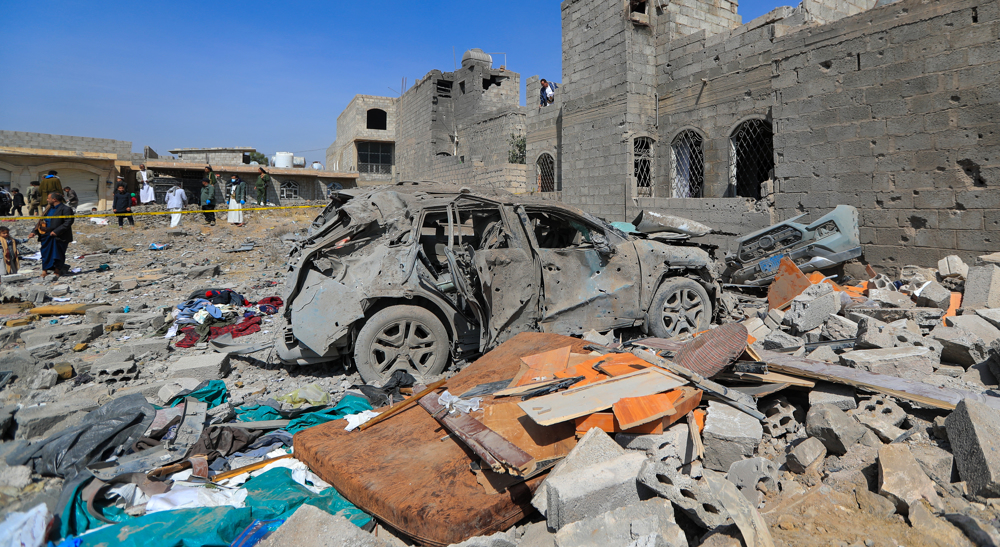
Three civilians killed in Sana'a as US intensifies attacks on Yemen
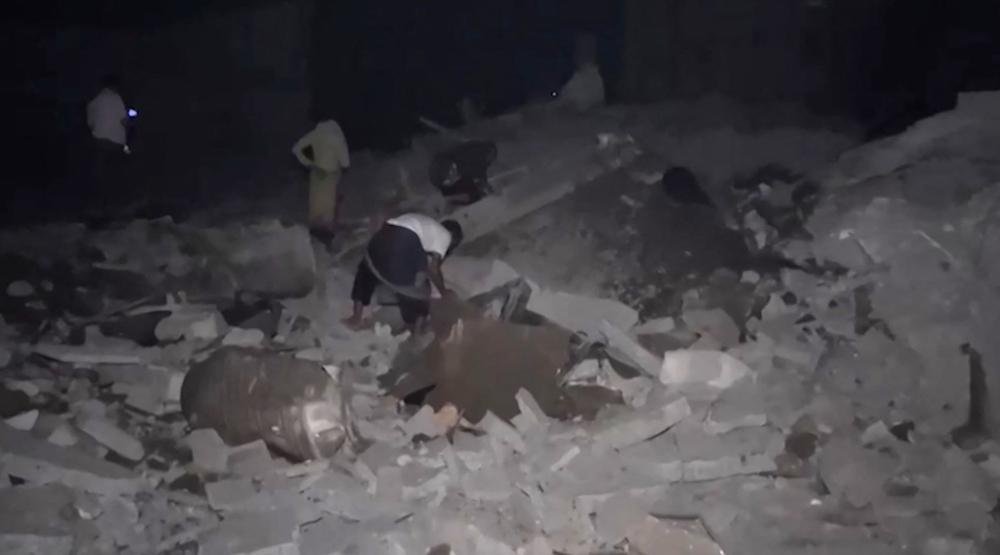
Death toll from US bombing of Yemen’s Hodeida rise to 12

Yemen conducts new retaliatory strikes on Israeli, US targets
VIDEO | Press TV's news headlines
VIDEO | BRICS+ Association of Cities, Municipalities held in Tehran
VIDEO | Protests erupt in front of US congress to slam Trump economic policies
VIDEO | Pakistan's religious leaders announce Jihad against Israel, US over Gaza genocide
Israel releases Palestinian boy who was arrested at age 13
Israeli CEO arrested for pedophilia and sexual assault
Israel's hawkish minister, husband accused of sex abuse by daughter
Iran breaks Germany's monopoly on cancer-treating Rhenium-188


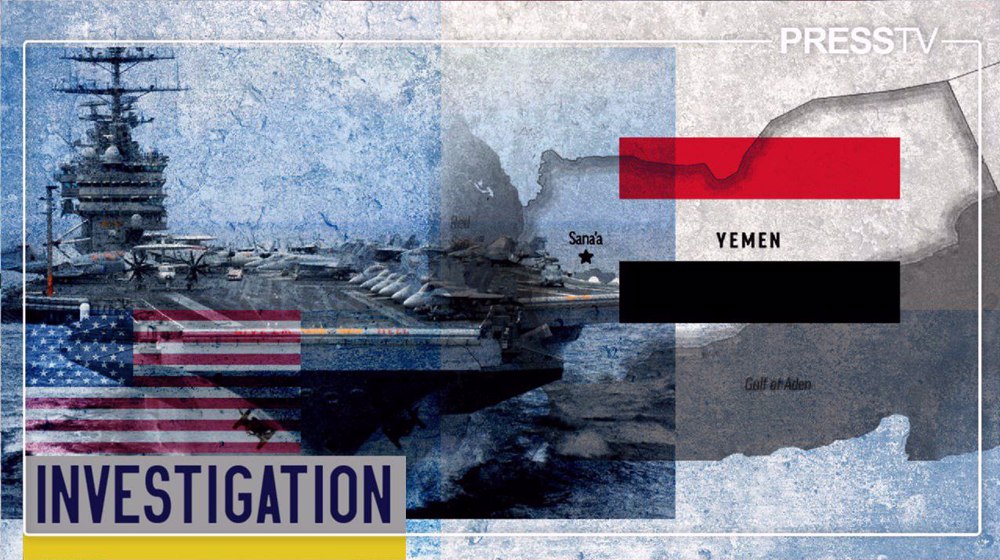



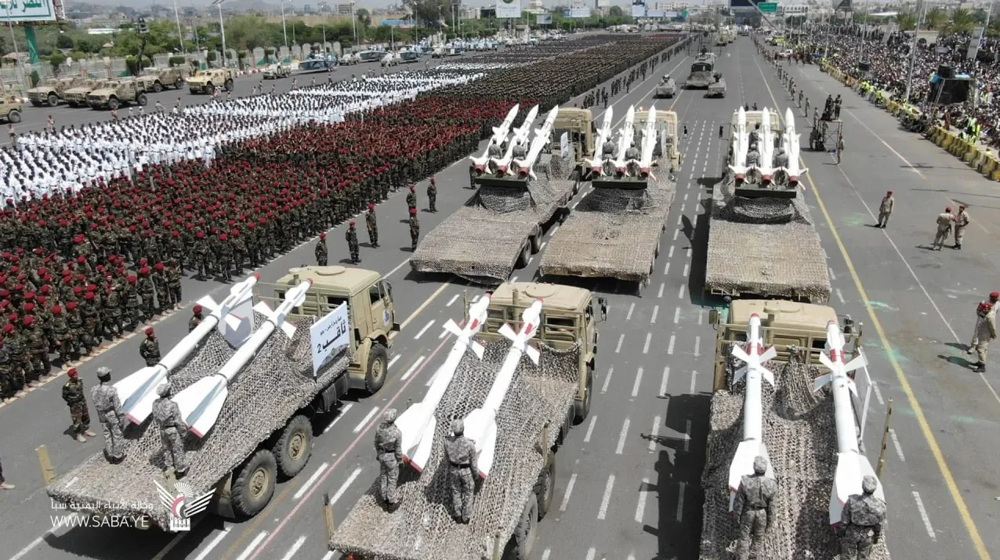


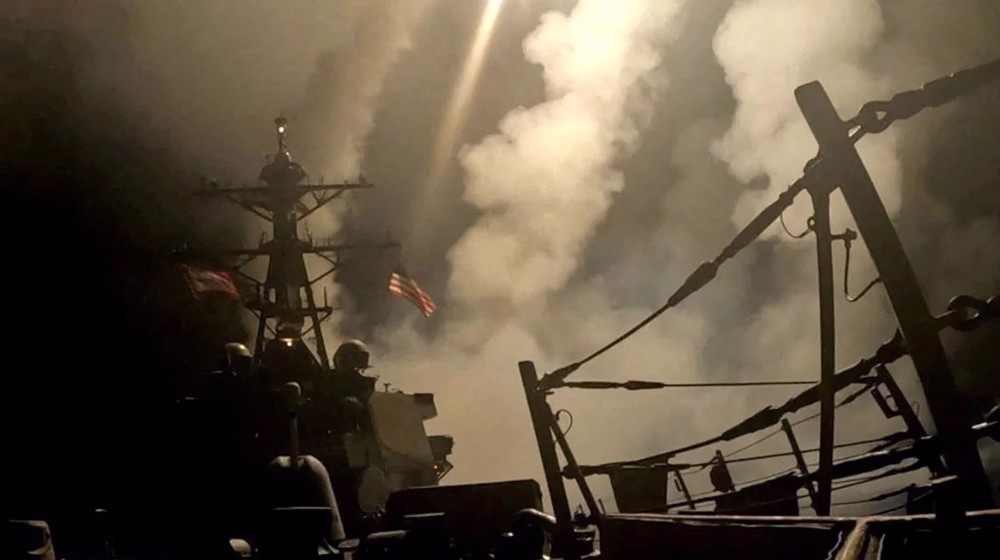
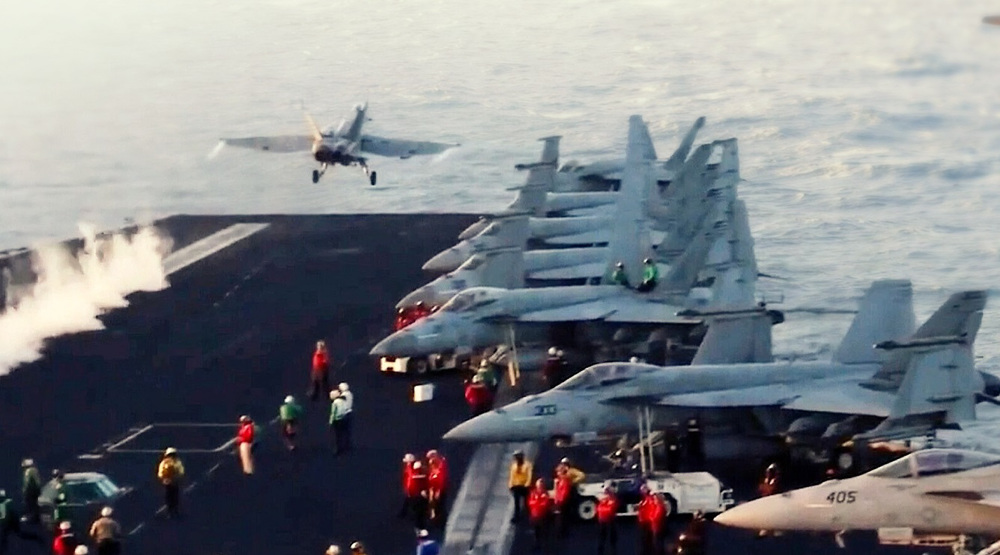

 This makes it easy to access the Press TV website
This makes it easy to access the Press TV website